Oro Verde, Colombia
Since the 17th century, people of African origin have struggled to live in remote, heavily forested parts of Chocó, a Department on the west coast of the Republic of Colombia (Colombia). Known as Afro-Colombians, Chocó’s inhabitants were originally brought to the region as slaves in order to work in its gold mines. Living and working in small, family-based units, these miners and their relatives were often displaced from their homes, disempowered from society and undervalued economically.
Beginning in the 1980s, however, the Colombian government began a number of programs in the region that sought to uplift the remote community. A milestone was reached in 2000 when Afro-Colombian miners in Chocó joined hands with social entrepreneurs and formed Corporacion Oro Verde (Oro Verde) – a nonprofit organization (NPO).
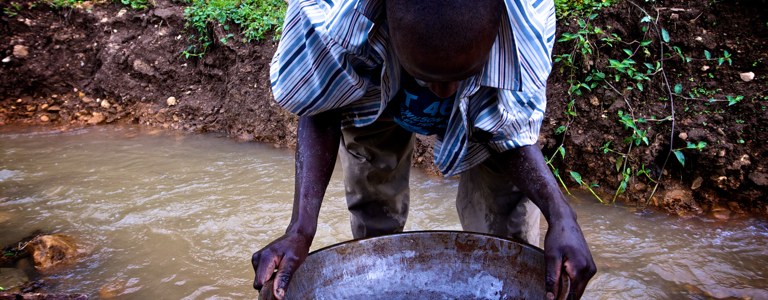
Based in Chocó, Oro Verde has rejuvenated traditional gold mining and production, opened new commercialization channels and developed the social capacity of the region’s inhabitants. In addition, the NPO has implemented imaginative environmentally sustainable policies in the area.
Traditional knowledge
Traditionally, artisanal and small-scale mining (ASM) workers in Chocó (including the municipalities of Condoto and Tadó) engage in labor intensive but highly skilled mining using hand-held tools. Customary mining in Chocó is carried out in several ways, one of which is panning (or mazamarreo), a technique that is used in the summer and employs a metal pan to scoop gravel from a riverbed. End of the river mining (or zambuillidero), moreover, is a method that is utilized during prolonged summers; it is defined by a miner extracting sediment at the river’s mouth. These sediments are then strained for gold which is collected, weighed and sold.
Engaged in mining through the dry and rainy seasons, ASM members in Chocó usually work in relative isolation. Their work, furthermore, is often economically inefficient, subject to price fluctuations and reliant on middle-men to facilitate commercialization. As a consequence, gold miners in the area have lacked lobbying power and direct access to markets and have thereby often been trapped in a cycle of disadvantage, indebtedness and poverty (including ill health and a largely degraded environment).
The residents of Chocó, however, have relied on their ASM mining tradition and on the auspices of Oro Verde in order to enhance their socio-economic capacity while conserving the environment.
Research and development and partnerships
Oro Verde – or “green gold” – was established by Catalina Cock Duque, a Colombian social policy expert and entrepreneur. Before establishing Oro Verde, in 1997 Ms. Cock Duque co-founded a community organization called “Friends of Chocó” (Amichocó) – an entity that develops environmental sustainability and commercialization strategies for Afro-Colombians in the region (the organization subsequently became an advisory branch of Oro Verde).
Via Amichocó, the social entrepreneur and her colleagues carried out research and development (R&D) initiatives including contacting and interviewing ASM members. During these interviews, miners in Chocó confirmed a desire to preserve and develop artisanal mining practices rather than outsourcing mining or selling their lands to large-scale mining companies.
Complementing her experiences in community organization with graduate studies in Social Policy and Planning in a university in the United Kingdom (UK), the social-scientist-turned-social-entrepreneur returned to Colombia and began working with 12 Afro-Colombian communities in Condoto and Tadó. Soon thereafter, Ms. Cock Duque created Oro Verde.
Beginning at the grassroots, the entrepreneur initially worked on a shoestring budget and relied on the generosity and support of family, friends and volunteers. In these early stages, Ms. Cock Duque set out an R&D strategy that included establishing a trusting and transparent relationship with Chocó’s inhabitants.
For instance, working with Community Councils (legal entities created in 1993 and comprising of ancestral families of the area) and municipal offices, the entrepreneur was able to win general support for the Oro Verde initiative. Once established, the NPO continued to face serious challenges including how to realize its main mission: capacity building for Chocó’s ASM men and women.
As the ancestral proprietors of the region, Ms. Cock Duque ensured that Afro-Colombian participation in the structure and aspirations of the Oro Verde initiative was paramount. In order to guide the NPO’s development, she also consulted with experts in environmental sustainability and community entrepreneurship.
Mainly due to these collaborations, Ms. Cock Duque was able to develop the decision-making and managerial ability of the region’s ASM workers, including enhancing their negotiation skills with partners such as governments and businesses.
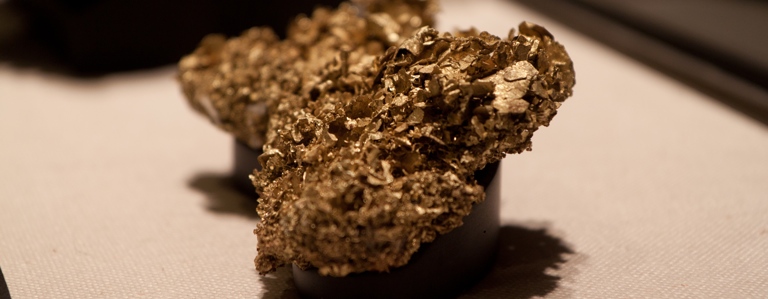
Key financial backing was provided for the initiative at this early stage by Both ENDS – a non-governmental organization (NGO) that supports environmental conservation and poverty alleviation programs from its base in Amsterdam, the Kingdom of the Netherlands (Netherlands). Having secured funds, Oro Verde began a series of improvements in the community, including developing new ways of coordinating, monitoring and implementing ASM procedures.
Community leaders from the area were trained in awareness-raising initiatives for the NPO such as visits to miners (where Oro Verde’s goals were explained) and facilitation of training programs on managerial and business methods – including accounting practices for the gold mining industry.
ASM practitioners, furthermore, were trained via workshops (financed by Amichocó) in techniques for creating gold-based products such as jewelry for the international market (despite showing some early promise, this initiative was discontinued because customer trends favored the provision of raw gold products from the region rather than finished consumer items).
Unperturbed by early setbacks, Ms. Cock Duque focused on perhaps the most important innovation by Oro Verde: enhancing the reputation and modernizing the work procedures of Afro-Colombians in Chocó. To this end, the NPO created new international standards for the ASM mining community that would be supported by certifications. Key to this process was the relatively new idea at the time of “responsible mining” – mining for precious metals that addresses environmental, socio-economic and cultural impacts of the industry.
Collaborating with several partners including Rainforest Rescue International (RRI), a research NPO that works to protect vulnerable environments and is based in Galle, the Democratic Socialist Republic of Sri Lanka (Sri Lanka), in 2004 Oro Verde helped to establish the Alliance for Responsible Mining (the Alliance).
Via the Alliance, an organization that develops economically viable and environmentally sustainable mining practices while seeking equity for workers, Oro Verde established an independent gold mining certification system for Afro-Colombian miners living in Chocó.
Known as the Certified Green Gold Programme (CGGP), the new scheme covers ten critical points – developed in consultation with Community Councils. Some of these points aim to limit ecological destruction caused by mining; eliminate the use of chemicals in mining practices; ensure gender equality; abolish the use of child labor in mines; and restrict mining activity located in a forest to 10% of the area.
With Amichocó staff monitoring and providing quality assurance for the CGGP (which is, moreover, based on norms established by the International Organization for Standardization, a global standards-setting entity comprised of various national standards organizations), the Alliance’s certification processes has gained national and international support.
The CGGP initiative was accepted by the Pacific Institute of Environmental Research (IIAP) – a public-private entity that develops sustainable management of natural resources in Quibdó, Chocó. Indeed, IIAP subsequently assumed the role of third party certifier for the program.

Oro Verde’s CGGP defines a clear and verifiable trail – or chain of custody process (CoC) – that ASM workers have to satisfy in order to be certified. To meet the CoC’s standards, the region’s miners have to take their gold (which has been mined according to pre-established CGGP criteria) to a local collection point, which is managed by the NPO’s staff, where it is weighed and recorded.
Following this process, Community Council members confirm the gold’s (or platinum’s) weight and pay the miner its market value plus a two percent premium. Henceforth, members of Amichocó handle the rest of the CoC trail, which includes transportation and marketing the mineral up to the point where it reaches a buyer (including international gold traders, manufacturers and jewelers).
Each step of the chain (which may undergo value-added processes – via micro-refineries – where the gold is refined and batched), furthermore, is closely monitored and the gold is stamped with a unique CGGP number. This specific number, in addition, can be tracked by interested customers or business clients via a database managed by Amichocó.
Oro Verde’s responsible mining initiative has not only improved the mining processes of Afro-Colombians; it has also brought credibility, transparency and legitimacy to what was a historically poorly managed ASM industry. Although satisfying CGGP standards can be time-consuming (lasting several months to comply with its stringent standards), approximately 1,400 miners representing over 100 family units have joined the scheme.
Through the certification, Chocó’s ASM community has been able to raise production methods and standards in a verifiable and sustainable way – as a whole, over 14 kilograms (kg) of gold (with 85% purity) and over 4kg of platinum annually has been raised. These miners have also ensured fair prices for their goods, safety in their work places and a sustained environment. As the production and managerial capacity of Community Councils has increased, the role played by Amichocó and IIAP has reduced to that of a contractor engaged on a needs-only basis.
Oro Verde’s industry-changing influence, meanwhile, has continued to grow and spread. As of 2012, there were 24 local, national and regional organizations in four countries associated with the NPO’s responsible mining certification standards. In the same year, 15 staff worked at Oro Verde’s main offices and members of the Afro-Colombian community were empowered via representatives who sit on the NPO’s Board of Governors.
Branding and commercialization
In order to enter the international market for precious metals and to compete against established rivals, Oro Verde has relied on a distinct reputation based on transparency, quality and equity. To this end, Oro Verde has worked with its partners to ensure that the organization’s gold and platinum products are distinguishable and traceable to its origins and production processes. Integral to this process is Biodiversa Foundation (Biodiversa) – a marketing company created by the NPO in order to facilitate brand management and commercialization.
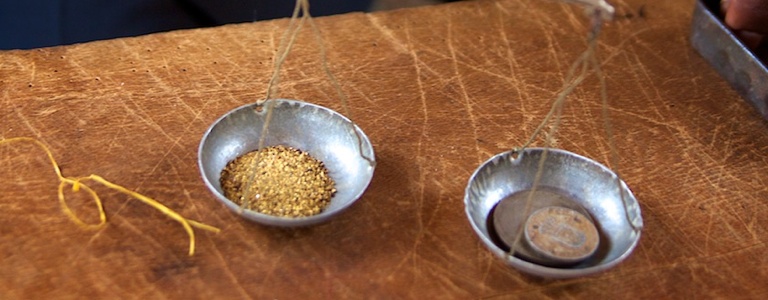
Biodiversa (which works closely with Amichocó; indeed, these organizations share the same offices), has enhanced the NPO’s “green gold” brand by collaborating with international partners including the Alliance and Fair Trade Labeling Organization International (FLO) – a global association that promotes fairness in trade between producers and companies.
Working with the Alliance and FLO’s independently managed Fairtrade Certification Mark (which identifies producers – including miners – who satisfy FLO standards), the marketing company created a second certification system and brand for the ASM industry called Fairmined. Intended to complement the “green gold” brand, the CCGP standard, and the Fairtrade label, Fairmined certification has raised production standards in the ASM community (via training seminars for miners provided by the FLO) and increased brand awareness for Oro Verde.
An important part of the certification’s requirements is to ensure that certified and non-certified gold products by Afro-Colombian miners are kept separate during the processing, refining and manufacturing stages. The separation is ensured in part because Biodiversa only enters contracts with pre-selected refineries and pre-certified ASM communities, quite apart from the carefully monitored CoC process itself. Fairmined and Fairtrade labels and certifications, which have been displayed simultaneously on Oro Verde’s gold and platinum products, have facilitated commercialization for the community initiative.
The NPO’s distinctly labeled metals have been commercialized to companies including Cred Jewelry (CRED), a manufacturer of accessories based in West Sussex, UK. Not only has CRED enjoyed the financial benefits of sourcing its raw materials from the NPO; as one of the founding members of the Alliance, the jeweler has promoted “responsible mining” while enhancing brand awareness for Oro Verde.
The UK jeweler created a marketing strategy on its website – called CRED Sources – through which it highlights the origins of its precious metals (including 18 carat (K) yellow gold and white alloy gold and platinum). Indeed, since 2011 all of CRED’s products (including wedding rings, bracelets, earrings and other accessories) have been created with gold and platinum procured via Biodiversa.
Fairmined and Faitraded gold and platinum have subsequently become a desired brand especially among business clients and consumers who desire to know the origin and socio-economic impact of the products that they buy. Biodiversa, moreover, manages all of Oro Verde’s business contracts (including agreements with refineries) and logistics (such as the community organization’s international contracts for procurement and delivery of products) while developing and implementing investment strategies for the NPO.
As of 2012, certified ASM miners from Chocó received an equitable price for their gold and platinum products – which was calculated at a minimum of 95% of the London Bullion Market Association (LBMA) rate (a key association in the industry, the LBMA sets the international price of gold daily). In addition to this, the miners received a Fairtrade premium (calculated as 10% of the applicable LBMA amount) which is invested in economic, social or environmental initiatives in Chocó.
In the same year, Oro Verde, via Biodiversa, commercialized refined 24 K gold and raw gold ingots and sold platinum in raw and dust varieties. The NPO, in addition, managed commercialization agreements with several companies (such as S&P Trading, a jeweler based in the Republic of France) in a number of countries including the Commonwealth of Canada, the Kingdom of Denmark, the Netherlands, the Federal Republic of Germany (Germany) and the UK.
Trademarks

gold mining and production, opened new commercialization
channels and developed the social capacity of the region’s
inhabitants. The NPO’s trademark, pictured
(Image: UKIPO trademark registration)
The Oro Verde – or “green gold” – initiative was created in order to re-brand the ASM industry in Colombia and to market their distinct products within a niche market. The NPO’s creators were therefore keen to secure intellectual property (IP) rights with the intention of keeping the avenues of their brand strategy unencumbered. To this end, Ms. Cock Duque and her colleagues have relied on the IP system.
Indeed, a trademark for OroVerde was registered (2014) in one of the organization’s most lucrative markets, the United States of America (USA), via the United States Patent and Trademark Office. Some years prior, a trademark application for OroVerde was made in another key market for the NPO, the UK, via the country’s Intellectual Property Office (UKIPO), and was registered in 2008.
Made of a golden sphere atop a green wave with the letters “green gold” scrolled underneath the wave, the NPO’s trademark and image has created a memorable and distinguishable brand for Chocó’s ASM community. The brand, moreover, has resonated with business clients and consumers worldwide. Because of this, Oro Verde has been able to enhance its identity among consumers and enter lucrative commercialization agreements with clients internationally.
Environment and public health
Despite its historical association with power and wealth, and notwithstanding its versatility as a metal, the search for gold has sometimes led to unsavory outcomes such as environmental degradation and diminution in the wellbeing of miners – including ASM workers. In 2012, the mining industry dumped approximately 180 million tons of toxic waste (including heavy metals and chemicals) into rivers, lakes and oceans around the world (Earth Works, 2012). Such pollutants, moreover, have often adversely affected human, animal, plant and marine life.
Oro Verde, however, has been at the vanguard of organizations in the industry that have developed strategies to reverse this process. As part of the NPO’s responsible mining strategy, several measures have been taken to sustain the environment in gold mining regions and to support the health (and rights) of workers – including young and women miners.
Oro Verde has ensured that traditional mining methods are maintained and encouraged. Certified ASM workers are trained to set aside the top soil before some mining activities and then to replace it after mining in order to restore the environment to a state that is as close as possible to the original. These workers are also encouraged to engage in land use diversification including non-mining activities such as growing crops or fishing – a form of forest management known as the “analogue forestry” system.
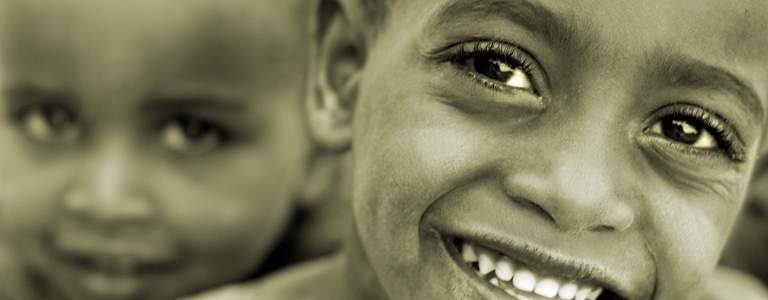
Analogue forestry mechanisms, which seek to maintain the natural state of the forest while extracting economic benefits from it, are also enshrined in Oro Verde’s CGGP initiative for ASM miners. By contrast, modernized mining usually relies on chemicals and industrial scale mechanical diggers that scar the environment and thereby cause soil degradation, deforestation, and population displacements (of non-human and human life).
Indeed, 650 to 1,000 tons of mercury is released into the ground annually due to ASM mining around the world. While such chemicals may facilitate the mining process, they can also adversely affect the wellbeing of workers – exposure to mercury can lead to kidney, stomach and muscular ailments. These pollutants, furthermore, can damage the environment – including the Chocó Biogeographic zone, an ecologically rich area that extends from Colombia’s northern border with the Republic of Panama and southward along the Pacific Ocean coast (This important zone has over 10,000 species of plants and 900 species of birds; Critical Ecosystems Partnership Fund, 2002).
The NPO, meanwhile, has ensured that potentially toxic chemicals – such as mercury and cyanide, which have been used historically by ASM and industrial miners to aid metal extraction – are prohibited from Fairtrade/Fairmined certified mines.
Oro Verde, in addition, has implemented policies that enhance the rights of workers and their families, including the rights and health of both women and young people. The need to protect children in particular has been pressing because the ASM gold mining industry has had one of the worst cases of child labor in the world (International Labor Organization, ILO, 1999).
Certified mining communities have to fulfill both ILO and national child labor regulations, including the prohibition of anyone under the age of 15 years from working in a mine. Oro Verde’s regulations, however, go further than the ILO standard and demand that no child (under18 years old) shall be allowed to work in dangerous conditions within a mine. Additionally, children, according to the NPO’s standards, are not permitted to work in mining as an alternative to going to school or engaging in social or physical development activities.
The community organization has also worked to enhance the role of women in the industry. In 2011 Oro Verde and Amichocó collaborated with a number of experts and organizations (including filmmakers, gender equality professionals and the United Nations High Commissioner for Refugees, a specialized agency of the United Nations) in social research and seminars on the role of women in the community.
As a result of these collaborations, an educational documentary film depicting the life of a woman miner was made (called Mama Chocó) and a draft work plan for implementing gender policies in the NPO’s development strategies was created. Both men and women of Oro Verde’s mining community, lastly, have been empowered via the right to collective bargaining.
In order to successfully implement its socio-economic and environmental strategies, the NPO has relied on two financial incentives for miners: the Fairtrade Premium (FP), for social causes; calculated at 10% of the LBMA price; and the Ecological Premium (EP), for environmental initiatives; calculated at 5% of the LBMA price.
Miners have been able to utilize the FP (via a democratic process within Community Councils) to improve production by buying new mining equipment, developing community projects including building new housing for workers, or investing in a pension fund. This premium, moreover, has been used to improve the health of Afro-Colombian families in the region via community based health projects.
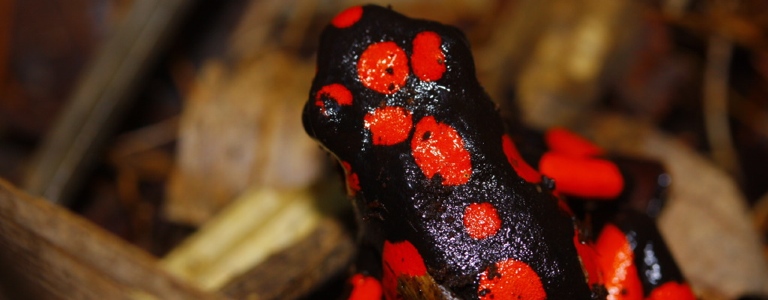
The EP, meanwhile, has been used for a number of environmental programs such as providing funds to allow miners to diversify their land use by developing agriculture based income streams, and engaging in educational workshops on land management, including tree planting.
As a result of Oro Verde’s environmental and social programs, by 2007 the Afro-Colombian community had protected 7,900 hectares of tropical forest and restored large areas of previously heavily mined and degraded areas in Chocó. In the same year, the NPO made large strides to improve health and to reduce gender inequality in the region (in 2012, 28% of Oro Verde’s certified miners were women).
Business results
Oro Verde has changed the rules and raised the standards of the ASM industry in Colombia. Subsequently, the NPO has increased incomes, enhanced the social status of miners and sustained the environment. As a result, Oro Verde’s business model has received international acclaim.
Indeed, the NPO’s’s business model has not only been implemented in Colombia; it has been adopted by several countries and organizations around the world. The organization’s green gold certification program, for instance, has been used in a pilot program managed by Transfair – an NPO based in the USA that works with producer-communities globally.
Similarly, countries in the Americas such as Bolivia, the Republic of Ecuador, and Peru have adopted the green gold certification program in their ASM industries. Countries in Africa with an ASM industry, in 2009, were set to follow.
Due to its increasing global influence, Oro Verde received the Gold Medal award (2009) by the SEED Initiative – an international organization that supports small-scale, socially-driven entrepreneurial programs.
Oro Verde, furthermore, has seen its capacity increase year on year since it was created. Between 2005 and 2008, for instance, the NPO saw sales for gold and platinum rise by 355%. In 2008, Oro Verde’s business and marketing branch – Biodiversa – purchased approximately 181 million Colombian Pesos (COP, or US$102,000) worth of gold from ASM practitioners in Chocó and sold approximately COP174 million (US$98,000) of it to jewelers. By the end of the same year, the marketing company’s sales reached approximately COP400 million (US$227,000).
Oro Verde’s certified Community Councils, moreover, managed approximately 143,000 hectares of collective land in the municipalities of Condoto and Tadó (which includes a population of roughly 30,000 people). As of 2012, the NPO’s precious metals were sold to a number of jewelry retailers in several countries around the world such as the Commonwealth of Australia, Canada, Colombia, the Kingdom of Denmark, the French Republic, Germany, the Netherlands, the Kingdom of Sweden, the Kingdom of Thailand, the UK and the USA.
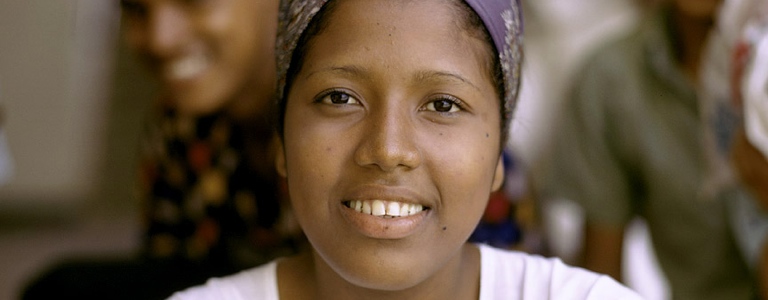
Raising the green standard
Starting off on a shoestring budget but based on a clear strategy to develop the capacity of a marginalized community, Oro Verde has shown how a grassroots initiative can uplift people, utilize their ancestral knowledge and enter the modern economy with competitive products.
By developing the skill and procedures of miners, and creating a niche market brand supported by industry certifications and the IP system, the NPO has opened new commercialization lines, raised incomes and sustained the environment in remote parts of Colombia.
Afro-Colombian workers can be proud of their role in protecting their gold mining traditions, raising mining standards and developing their socio-economic capacity and prospects.
Source: WIPO

 Client Focus
Client Focus